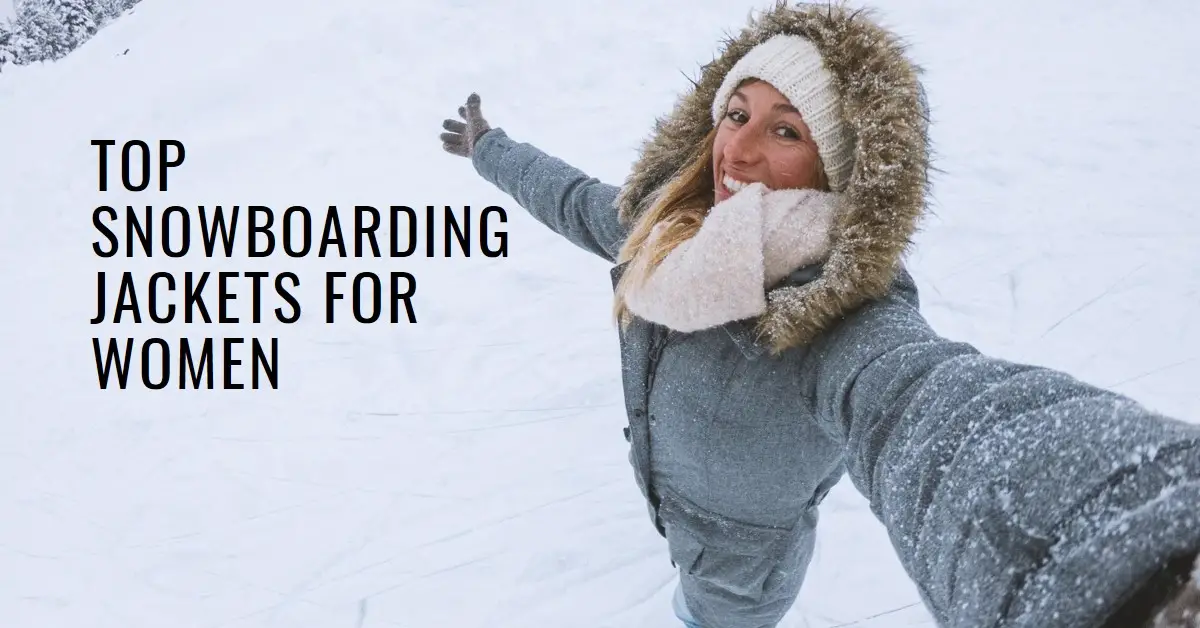Table of Contents
Introduction
As the snow starts to fall and the mountains beckon, it’s time for snowboarders to gear up for another exhilarating season on the slopes. For women, finding the perfect snowboarding jacket can be a daunting task, with countless options available on the market. From technical performance features to stylish designs, there’s a lot to consider. In this comprehensive guide, we’ll dive deep into the best women’s snowboarding jackets for the 2024 season, taking into account factors such as warmth, waterproofing, breathability, mobility, and style. Whether you’re a seasoned pro or a beginner just starting out, you’re sure to find a jacket that ticks all the boxes and elevates your snowboarding experience to new heights.
Factors to Consider When Choosing a Women’s Snowboarding Jacket
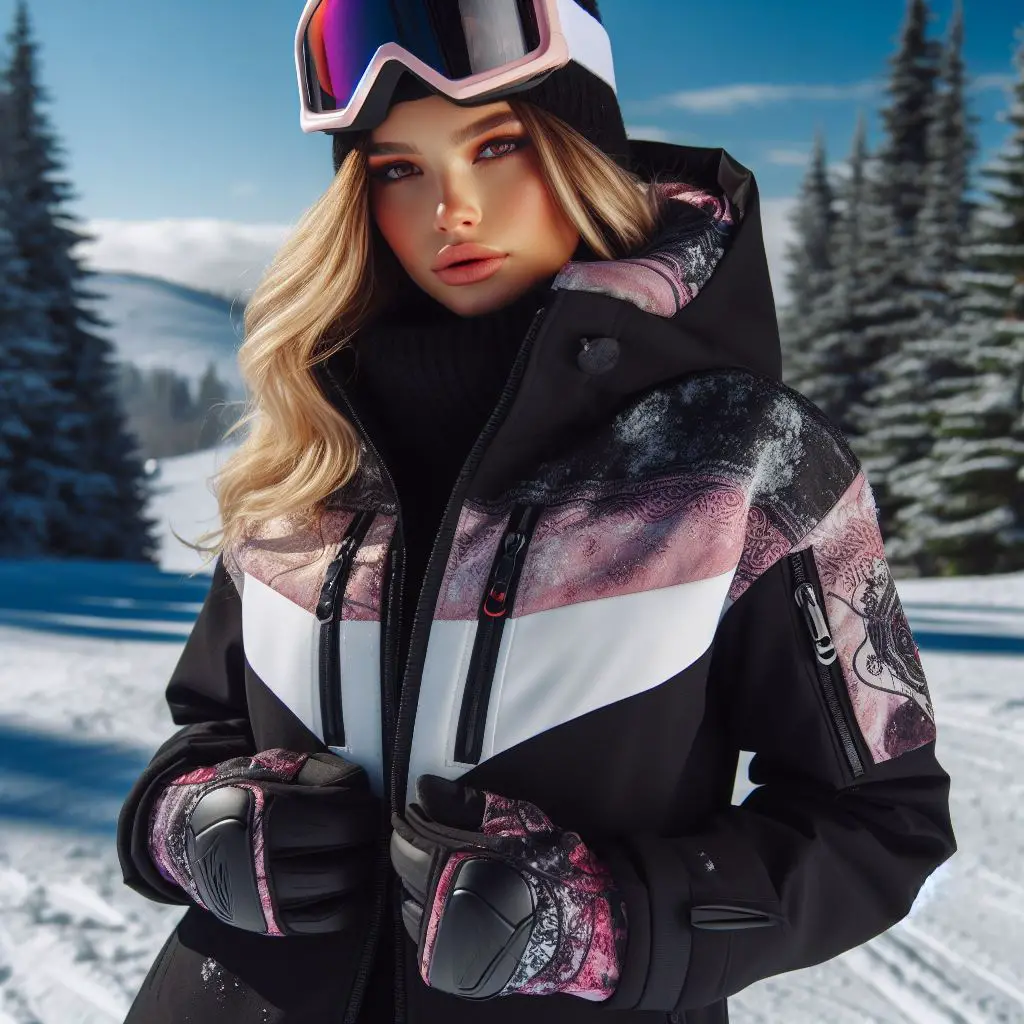
Before we delve into the top picks, let’s discuss some essential factors to consider when selecting a women’s snowboarding jacket:
Warmth
The primary function of a snowboarding jacket is to keep you warm in cold, windy conditions. Look for jackets with high-quality insulation that provides adequate warmth without adding too much bulk. Down and synthetic insulation are both excellent options, each with its own advantages and disadvantages.
- Down Insulation: Down is a natural insulator that offers exceptional warmth-to-weight ratio. It’s lightweight, compressible, and highly effective at trapping body heat. However, down loses its insulating properties when wet, so it’s crucial to have a waterproof and breathable outer shell to protect it.
- Synthetic Insulation: Synthetic insulation, such as PrimaLoft or Thermoball, is a great alternative to down. It retains its insulating properties even when wet, making it a more versatile choice for snowboarding. Synthetic insulation is also hypoallergenic, making it a suitable option for those with allergies.
Waterproofing
A good snowboarding jacket should be highly waterproof to protect you from snow, rain, and moisture. Look for jackets with a waterproof rating of at least 10,000mm (millimeters) or higher. This rating indicates the amount of water pressure the jacket can withstand before it begins to leak.
- Waterproof Membranes: High-quality waterproof membranes, such as Gore-Tex, eVent, and Omni-Tech, are designed to keep water out while allowing moisture vapor to escape, ensuring you stay dry and comfortable.
Breathability
While keeping you dry from the outside, a snowboarding jacket should also allow moisture vapor to escape from the inside to prevent overheating and clamminess. Breathability ratings, measured in grams, indicate how well a jacket can manage this.
- Breathability Ratings: Look for jackets with a breathability rating of at least 10,000g or higher. The higher the rating, the more breathable the jacket will be, allowing moisture vapor to escape and keeping you comfortable during intense activities.
Mobility and Fit
Snowboarding involves a lot of movement, so your jacket should allow for a full range of motion without restricting your arms or torso. Look for jackets with articulated elbows, gusseted underarms, and a slightly longer cut to accommodate your riding stance.
- Articulated Patterning: Jackets with articulated patterning are designed to follow the contours of your body, allowing for unrestricted movement and flexibility.
- Gusseted Underarms: Gusseted underarms provide extra room for arm movement, preventing the jacket from riding up or restricting your range of motion.
- Longer Cut: A slightly longer cut in the back can help keep the jacket in place and prevent it from riding up when you’re in a riding stance.
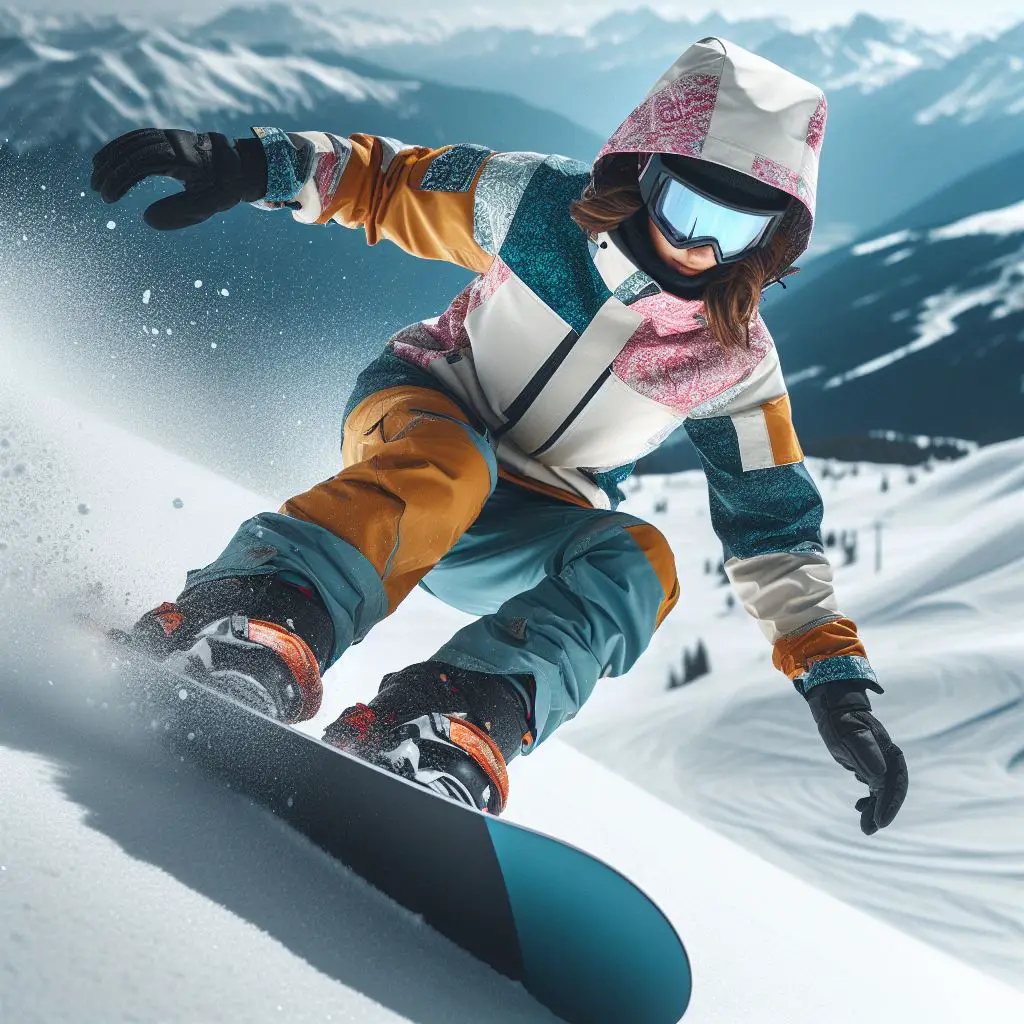
Features
Consider features like adjustable powder skirts, pit zips, pass pockets, and helmet-compatible hoods, which can enhance your overall comfort and convenience on the slopes.
- Powder Skirt: An adjustable powder skirt helps keep snow out of your jacket and prevents it from creeping up your back when you lean forward.
- Pit Zips: Pit zips, or underarm vents, allow you to regulate your body temperature by letting in cool air when you’re working hard.
- Pass Pockets: Pass pockets, usually located on the sleeve or chest area, provide a convenient place to store your lift pass or card for easy access.
- Helmet-Compatible Hood: A helmet-compatible hood is designed to fit comfortably over your helmet, providing additional protection from the elements.
Style
While functionality is paramount, you’ll also want a jacket that looks great and reflects your personal style. Fortunately, many snowboarding brands offer a wide range of colors, patterns, and designs to choose from.
- Color and Pattern Options: From bold and vibrant hues to subtle and understated shades, there’s a color or pattern to suit every taste.
- Fashionable Designs: Some brands prioritize style as much as performance, offering jackets with unique designs, slim fits, and stylish details.
Top Women’s Snowboarding Jackets for 2024
Without further ado, here are our top picks for the best women’s snowboarding jackets in 2024:
Arcteryx Sidewinder SV Jacket
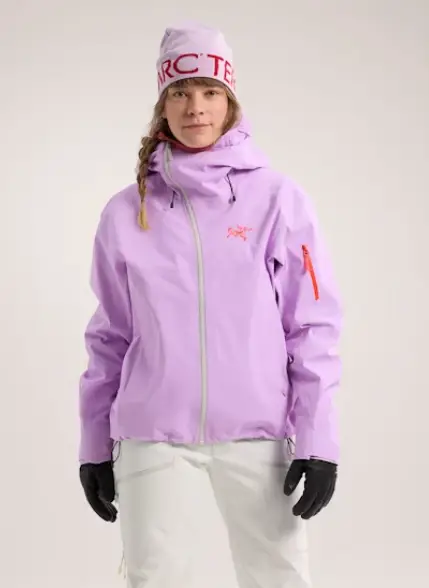
Arc’teryx is renowned for its high-quality, technical outerwear, and the Sidewinder SV Jacket is no exception. This jacket features a durable, waterproof, and breathable three-layer Gore-Tex Pro shell, making it an excellent choice for serious snowboarders. It boasts an impressive waterproof rating of 28,000mm and a breathability rating of 25,000g, ensuring you stay dry and comfortable on the slopes, even in the harshest conditions.
The Sidewinder SV is insulated with Coreloft synthetic insulation, which provides warmth and retains its insulating properties even when wet. This jacket also features articulated patterning, gusseted underarms, and a dedicated powder skirt, offering exceptional mobility and protection from the elements.
Additional features include pit zips for ventilation, pass pockets, and a helmet-compatible hood, making this jacket a versatile choice for riders who demand the best in performance and comfort.
Burton Ak Cyclic Gore-Tex Jacket
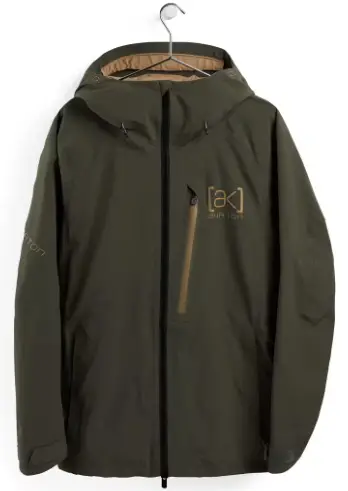
Burton, a leading brand in the snowboarding industry, has crafted a masterpiece with the Ak Cyclic Gore-Tex Jacket. This jacket features a two-layer Gore-Tex shell with a waterproof rating of 28,000mm and a breathability rating of 20,000g, ensuring you stay dry and comfortable even in the wettest conditions.
The Ak Cyclic is insulated with Burton’s proprietary Thermolite insulation, which provides warmth without adding unnecessary bulk. This synthetic insulation offers excellent warmth-to-weight ratio and retains its insulating properties when wet, making it a reliable choice for serious riders.
In terms of features, this jacket doesn’t disappoint. It includes a fully adjustable powder skirt, pit zips, and a helmet-compatible hood, making it a versatile choice for riders of all levels. The jacket also boasts articulated patterning and gusseted underarms, allowing for unrestricted movement and flexibility on the slopes.
Patagonia Powder Bowl Jacket

Patagonia is known for its commitment to sustainability and eco-friendly practices, and the Powder Bowl Jacket is no exception. Made from recycled materials, this jacket features a waterproof and breathable H2No Performance Standard shell, ensuring you stay dry and comfortable on the mountain.
The Powder Bowl Jacket is insulated with 60g Thermogreen polyester insulation, providing ample warmth without sacrificing mobility. This synthetic insulation is not only lightweight but also eco-friendly, as it’s made from recycled materials.
In addition to its environmental credentials, this jacket offers a range of practical features. It includes an adjustable powder skirt, pit zips, and a helmet-compatible hood, making it an excellent choice for environmentally conscious riders who demand high-quality performance.
The North Face Thermoball Snow Triclimate Jacket
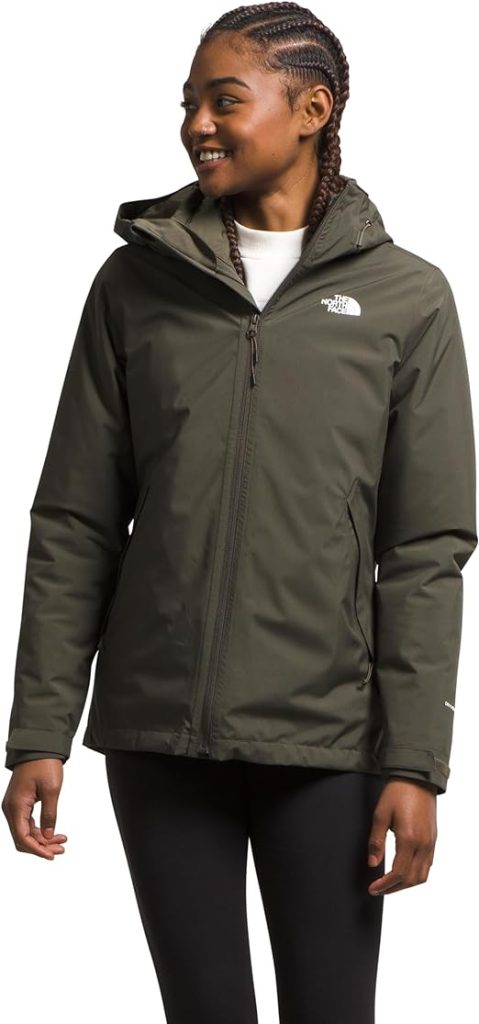
The North Face’s Thermoball Snow Triclimate Jacket is a versatile three-in-one jacket that can adapt to changing weather conditions. The outer shell is waterproof and breathable, with a DryVent membrane that blocks rain and snow while allowing moisture vapor to escape.
The inner jacket is insulated with ThermoBall synthetic insulation, which mimics the warmth of down while remaining lightweight and packable. This innovative insulation is made from small, round synthetic clusters that trap and retain heat effectively.
The beauty of this jacket lies in its adaptability. The two layers can be worn together or separately, allowing you to adjust to changing temperatures and conditions on the mountain. This flexibility makes the Thermoball Snow Triclimate Jacket a practical choice for riders who encounter a wide range of weather scenarios.
Columbia Whirlibird IV Interchange Jacket
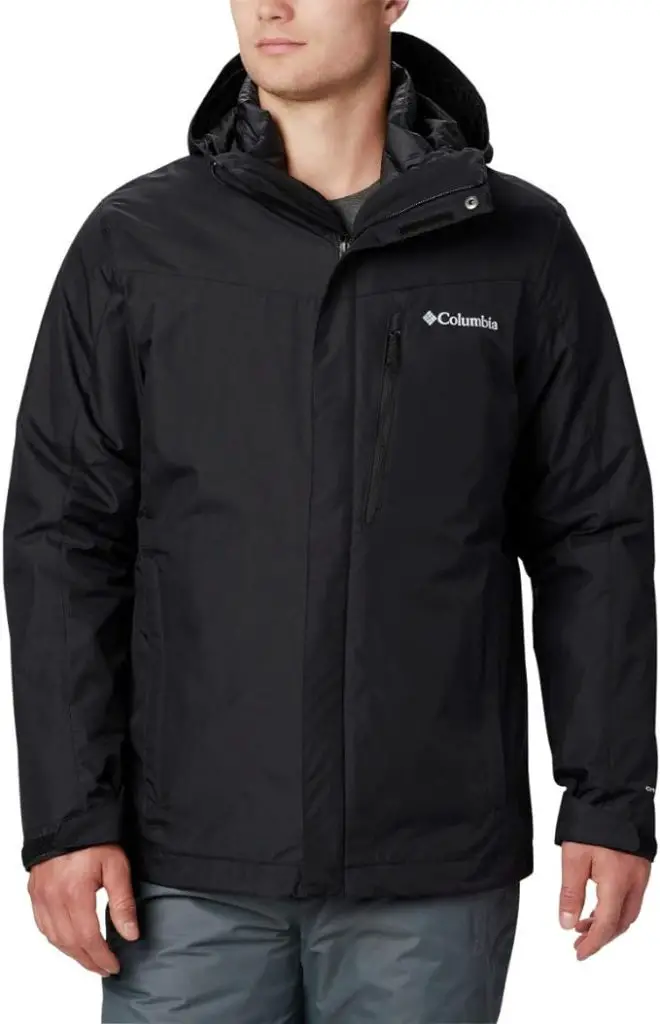
Columbia’s Whirlibird IV Interchange Jacket is another excellent three-in-one option. The outer shell is waterproof and breathable, with an Omni-Tech membrane that blocks rain and snow while allowing body heat to escape.
The inner jacket is insulated with synthetic insulation, providing warmth without added weight. Like the North Face Thermoball Snow Triclimate Jacket, the two layers can be worn together or separately, allowing you to adapt to changing temperatures and conditions on the mountain.
This jacket also features an adjustable powder skirt, pit zips, and a helmet-compatible hood, making it a practical choice for riders who demand both versatility and performance.
Volcom Fern Insulated Gore-Tex Jacket
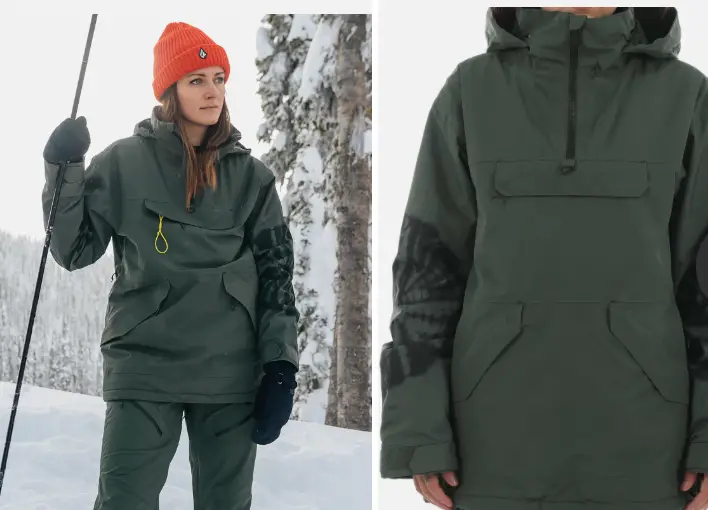
For riders who value style as much as performance, the Volcom Fern Insulated Gore-Tex Jacket is a standout choice. This jacket features a waterproof and breathable Gore-Tex shell, ensuring you stay dry and comfortable on the slopes. It boasts a waterproof rating of 28,000mm and a breathability rating of 20,000g, making it a reliable choice for serious riders.
The Fern Insulated Jacket is insulated with 60g of synthetic insulation, providing warmth without adding unnecessary bulk. This lightweight insulation allows for unrestricted movement and flexibility, ensuring you can ride with ease.
In addition to its technical features, this jacket also offers a unique and stylish design. With its attention to detail, modern silhouette, and bold colors, the Fern Insulated Gore-Tex Jacket is a stylish and functional option for fashion-conscious snowboarders.
The jacket also includes practical features like a powder skirt, pit zips, and a helmet-compatible hood, making it a well-rounded choice for riders who demand both style and performance.
Comparison Table
To help you compare the top picks at a glance, here’s a table summarizing the key features and specifications of each jacket:
| Jacket | Waterproof Rating | Breathability Rating | Insulation | Features |
|---|---|---|---|---|
| Arcteryx Sidewinder SV Jacket | 28,000mm | 25,000g | Coreloft synthetic | Articulated patterning, gusseted underarms, powder skirt, pit zips, pass pockets, helmet-compatible hood |
| Burton Ak Cyclic Gore-Tex Jacket | 28,000mm | 20,000g | Burton’s Thermolite insulation | Adjustable powder skirt, pit zips, helmet-compatible hood, articulated patterning, gusseted underarms |
| Patagonia Powder Bowl Jacket | H2No Performance Standard | H2No Performance Standard | 60g Thermogreen polyester insulation | Adjustable powder skirt, pit zips, helmet-compatible hood, made from recycled materials |
| The North Face Thermoball Snow Triclimate Jacket | DryVent membrane | DryVent membrane | ThermoBall synthetic insulation | Three-in-one design, inner and outer layers can be worn separately, adjustable powder skirt, pit zips, helmet-compatible hood |
| Columbia Whirlibird IV Interchange Jacket | Omni-Tech membrane | Omni-Tech membrane | Synthetic insulation | Three-in-one design, inner and outer layers can be worn separately, adjustable powder skirt, pit zips, helmet-compatible hood |
| Volcom Fern Insulated Gore-Tex Jacket | 28,000mm | 20,000g | 60g synthetic insulation | Powder skirt, pit zips, helmet-compatible hood, stylish design, articulated patterning, gusseted underarms |
Choosing the Right Insulation: Down vs. Synthetic
When it comes to insulation, snowboarders have two main choices: down or synthetic. Both have their strengths and weaknesses, and the right choice depends on your personal preferences and riding style.
Down Insulation
Down insulation is a natural material derived from the soft, fluffy undercoating of waterfowl, such as geese or ducks. It’s renowned for its exceptional warmth-to-weight ratio, meaning it can provide a high level of warmth while remaining lightweight and compressible.
Pros of Down Insulation:
- Excellent warmth-to-weight ratio: Down provides superior warmth for its weight, making it a lightweight and packable option.
- Compressible: Down can be compressed into a small space, making it easier to pack and transport.
- Breathable: Down is a natural material that allows air to circulate, keeping you comfortable during active pursuits.
Cons of Down Insulation:
- Loses insulating properties when wet: Down loses its loft and insulating abilities when it gets wet, making it less effective in damp or humid conditions.
- Requires proper care: Down requires special care to maintain its insulating properties, such as avoiding direct exposure to heat or moisture.
- Potential for allergies: Some individuals may have allergies or sensitivities to down, making synthetic insulation a better choice for them.
Synthetic Insulation
Synthetic insulation is made from man-made materials, such as polyester or nylon fibers, designed to mimic the insulating properties of down. It’s a popular choice for outdoor enthusiasts who demand reliable performance in a wide range of conditions.
Pros of Synthetic Insulation:
- Retains insulating properties when wet: Synthetic insulation continues to provide warmth even when it gets wet, making it a more versatile choice for snowboarding.
- Easy to care for: Synthetic insulation is generally easier to care for than down, as it can be machine washed and dried without losing its loft.
- Hypoallergenic: Synthetic insulation is a good choice for individuals with allergies or sensitivities to down.
- Consistent performance: Synthetic insulation provides a more consistent level of warmth, as it doesn’t rely on the natural loft of down feathers.
Cons of Synthetic Insulation:
- Slightly heavier: Synthetic insulation is generally heavier than down when compared weight-to-weight.
- Less compressible: Synthetic insulation doesn’t compress as well as down, making it less packable and potentially bulkier.
- Longer drying time: Synthetic insulation takes longer to dry than down if it gets wet.
When choosing between down and synthetic insulation, consider your riding conditions, personal preferences, and the overall performance requirements of the jacket. Both options can provide excellent warmth and protection, and the right choice depends on your individual needs.
Layering for Maximum Warmth and Comfort
While a high-quality snowboarding jacket is essential, layering is also crucial for staying warm and comfortable on the slopes. Proper layering allows you to regulate your body temperature and moisture levels, preventing overheating or getting too cold.
Here’s a basic guide to layering for snowboarding:
- Base Layer: Start with a base layer made from moisture-wicking materials like merino wool or synthetic fabrics. These fabrics will draw sweat away from your skin, helping you stay dry and comfortable.
- Mid Layer: Add an insulating mid layer, such as a fleece or lightweight down jacket, to provide warmth and breathability.
- Outer Layer: Your snowboarding jacket is the outer layer that protects you from the elements and insulates you from the cold.
- Additional Layers (Optional): Depending on the weather conditions and your personal preferences, you may want to add additional layers, such as a vest or thin sweater, for extra warmth.
Remember to adjust your layers as needed throughout the day. If you start to feel too warm, remove a layer or open up vents to allow for better airflow. If you get cold, add an extra layer or tighten the jacket’s hem and cuffs to trap body heat.
By mastering the art of layering, you’ll be able to stay comfortable and enjoy your time on the slopes to the fullest.
Caring for Your Snowboarding Jacket
Investing in a high-quality snowboarding jacket is essential, but proper care and maintenance are also crucial to ensure its longevity and performance. Here are some tips for caring for your snowboarding jacket:
- Read the Care Instructions: Always read and follow the care instructions provided by the manufacturer. Different jackets may have specific requirements for washing, drying, and storage.
- Clean Regularly: Clean your jacket regularly to remove dirt, salt, and other contaminants that can degrade the fabric and insulation. Use a mild detergent and wash on a gentle cycle in cold water.
- Avoid Harsh Chemicals: Steer clear of harsh chemicals, such as bleach or fabric softeners, as they can damage the waterproof membranes and insulation.
- Air Dry or Tumble Dry on Low: Avoid exposing your jacket to high heat, which can damage the insulation and waterproof coatings. Air drying or tumble drying on a low setting is often recommended.
- Store Properly: When not in use, store your jacket in a cool, dry place, away from direct sunlight and moisture. Hang it or store it loosely to prevent the insulation from getting compressed.
- Reproofing: Over time, the waterproof coatings on your jacket may wear off, reducing its ability to repel water. Consider reproofing your jacket with a waterproof treatment every few seasons to maintain its water-resistant properties.
- Repair When Necessary: If you notice any rips, tears, or damage to your jacket, address them promptly. Seek professional repair services or use a repair kit to patch any holes or worn areas.
By following these care tips, you can help extend the lifespan of your snowboarding jacket and ensure it continues to perform at its best, season after season.
Conclusion
Choosing the right women’s snowboarding jacket is essential for an enjoyable and comfortable experience on the slopes. The jackets we’ve highlighted in this article represent some of the best options for warmth, waterproofing, breathability, mobility, and overall performance. Whether you prefer a minimalist, technical design or a more fashion-forward look, there’s a jacket out there that will suit your needs and elevate your snowboarding game.
Remember to consider factors like insulation type, waterproofing, breathability, and features when selecting your jacket, and don’t forget to layer properly for maximum comfort and temperature regulation. With the right gear and proper care, you’ll be ready to tackle the mountain with confidence and enjoy the thrill of carving through fresh powder in style.
So, gear up, hit the slopes, and make the most of the upcoming snowboarding season with one of these fantastic women’s snowboarding jackets. Happy shredding!
